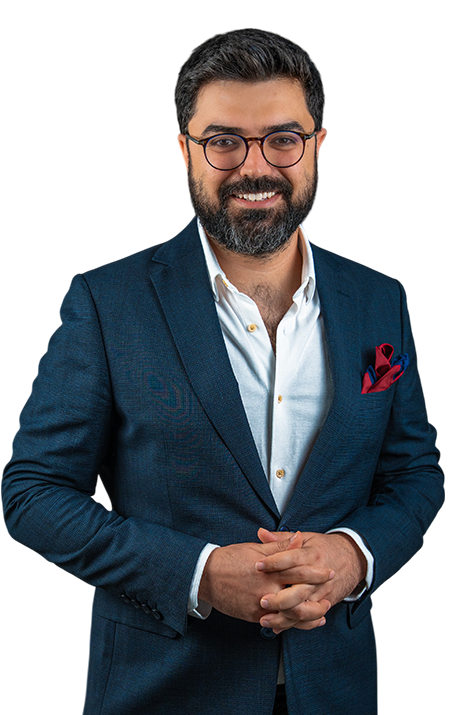What Is Rhinoplasty (Nose Aesthetic Surgery)?
Rhinoplasty is a comprehensive plastic surgery operation performed by modifying the bone and cartilage structures of the nose. Also referred to as nasoplasty or rhinoplasty, this aesthetic intervention provides both visual and functional enhancements. Restructuring the anatomical structure of the nose significantly improves not only the external appearance but also the quality of breathing.
During this surgery, the surgeon precisely reshapes various parts of the nose according to the patient’s expectations. Protrusions in the bone structure are filed down, cartilage tissues are adjusted, and new supportive structures are added when necessary. Thanks to modern surgical techniques, millimetric precision is now possible. The primary goal during the operation is to optimize the functionality of the nasal airway.
Who Can Undergo Rhinoplasty Surgery?
Individuals with aesthetic concerns or breathing problems related to the nose can be candidates for rhinoplasty. This surgery can be performed on both women and men, but it is important for facial development to be complete, especially in younger patients. Generally, the surgery is recommended for those over the age of 17-18.
Rhinoplasty can also be performed on individuals who have experienced trauma to the nose or have congenital deformities. Additionally, patients who have undergone previous nose surgery but are dissatisfied with the results may be eligible for revision rhinoplasty.
Why Is Surgeon Selection Important in Rhinoplasty?
The most crucial factor in the success of a rhinoplasty surgery is the experience and expertise of the surgeon. Since the nose has a complex anatomical structure and contains delicate tissues, procedures performed by inexperienced physicians can lead to undesired results. Choosing a specialist surgeon is vital for both the success of the surgery and patient safety.
An experienced plastic surgeon not only makes aesthetic corrections but also preserves and improves the functional characteristics of the nose. The surgeon’s background, the number of surgeries performed, and previous patient results may influence the cost, but this is an essential investment for achieving high-quality outcomes. The surgeon should also have an aesthetic perspective that ensures natural results aligned with the patient’s facial proportions.
When choosing a surgeon, it is important to examine their educational background, certifications, memberships in professional organizations, and patient reviews. A good surgeon conducts detailed pre-operative evaluations, understands the patient’s expectations, and sets realistic goals. They also clearly communicate potential risks and provide accurate information throughout the process.
How Is Rhinoplasty Performed?
Rhinoplasty is usually performed under general anesthesia and typically lasts between 2 and 3 hours. Depending on the technique used, the operation can be performed either open or closed.
In open rhinoplasty, a small incision is made at the base of the nose, allowing the surgeon a full view of the internal structures. This method provides more visibility and control, especially in complex cases or revision surgeries.
In closed rhinoplasty, all incisions are made inside the nostrils. This method leaves no visible scars and allows for a faster healing process. However, it may be more limited in terms of intervention in complex anatomical cases.
During the surgery, the surgeon reshapes the nasal bones and cartilage, removes deformities, and, if necessary, adds grafts for support. Septoplasty can also be performed in the same session to correct a deviated septum and improve breathing.
What Is the Healing Process After Rhinoplasty?
The first few days after rhinoplasty surgery involve mild swelling, bruising around the eyes, and slight discomfort. These symptoms are part of the natural healing process and typically diminish within the first week. A nasal splint or cast is usually placed on the nose for protection and support during the first 5-7 days.
It is important for the patient to rest with their head elevated and avoid heavy physical activity. Cold compresses can help reduce swelling. It is also important not to blow your nose, sleep on your side, or wear glasses for the first few weeks.
Initial recovery usually takes 7 to 10 days, after which most patients can return to work and daily activities. However, the full recovery and final shape of the nose may take several months. Edema and tissue adaptation continue throughout this period.
Is Rhinoplasty Painful?
Thanks to modern anesthesia techniques, patients do not feel pain during the surgery. Mild pain and discomfort may occur after the operation, but these symptoms are usually controlled with prescribed medications. Many patients report that the recovery process is more comfortable than expected.
Is There a Risk of Scarring?
In closed rhinoplasty, no visible scars remain because the incisions are made inside the nostrils. In open rhinoplasty, a small scar may remain at the base of the nose, but it is usually barely noticeable over time. Surgeons generally use aesthetic suturing techniques to minimize scarring.
How Long Does the Nose Take to Fully Heal?
Although initial recovery occurs within 1 to 2 weeks, the full healing process may take up to 12 months. During this time, edema gradually subsides, and the tissues adapt to their new shape. Patients are advised to avoid trauma, exposure to the sun, and wearing glasses until the nose fully heals.
Can a Nose Job Be Done More Than Once?
Yes, rhinoplasty can be repeated when necessary. In some cases, a second or even third surgery may be required due to aesthetic dissatisfaction or complications such as asymmetry, breathing problems, or tissue collapse. This is called revision rhinoplasty.
Revision surgeries are more complex and require advanced experience and technical skills. Therefore, it is recommended to wait at least 6 to 12 months after the first surgery before undergoing a revision procedure.
How to Choose the Right Surgeon for a Natural-Looking Nose?
For a natural and harmonious nose result, the surgeon must have both aesthetic vision and technical skill. Surgeons who take a personalized approach and analyze the patient’s facial structure in detail offer more satisfactory results. Natural-looking noses should be designed specifically for the patient’s face, without creating an artificial appearance.
Reviewing the surgeon’s before-and-after photos, obtaining patient references, and consulting in person are essential steps. A qualified surgeon will inform the patient of realistic expectations and plan the surgery in line with the patient’s individual needs.
What Are the Costs of Rhinoplasty Surgery?
Rhinoplasty costs vary depending on the experience of the surgeon, the hospital used, the technique applied, and whether it is a first-time or revision surgery. The price may also vary according to the geographical location and the scope of the procedure.
It is important not to choose the cheapest option just because of the price. Instead, choosing a reputable surgeon and a fully equipped hospital environment provides long-term satisfaction and reduces the risk of complications. Some clinics offer all-inclusive packages for international patients.
Final Notes
Rhinoplasty is one of the most effective and popular aesthetic surgeries performed to correct both functional and cosmetic concerns. To achieve safe and satisfying results, choosing an experienced surgeon, having realistic expectations, and carefully following the post-operative process are essential.
Patients should attend follow-up appointments regularly and protect their nose from any trauma. With proper planning and professional care, rhinoplasty can provide long-term satisfaction in both appearance and breathing comfort.

